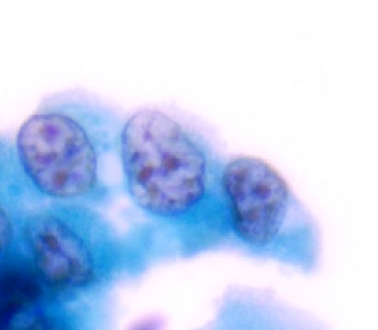AUCs, also known as atypical urothelial cells, are deep cells that, in small numbers, display nuclear abnormalities that prevent them from being categorized as malignant high-grade cells, such as an elevated N/C ratio, an eccentric nucleus, hyperchromatism, and/or irregular shape.
The existence of atypical urothelial cells in urine means the urine sample contains some abnormalities; however, the cells are not sufficiently abnormal to be classified as cancerous. The appearance of atypical cells in the urine can also be a sign of infection in the urinary system or the result of radiation therapy done close to the bladder. Urine cytology tests can assist diagnose cancer, however, doctors don’t utilize them only for urinary system tumors. This urine cytology test examines the urine for precancerous or cancerous cells. A cytopathologist looks for abnormalities in the urine cells under a microscope.
Atypical Urothelial Cells in Urine Symptoms
The presence of urothelial tissue fragments (UTF) in urine is frequently regarded as an aberrant sign that is possibly related to urothelial papillary neoplasms.
Urine cytology tests can aid in the detection of some malignancies, but they have limits. The absence of cancer cells in urine cytology does not guarantee that a person is cancer-free. Because of this, doctors usually order other tests along with urine cytology and sometimes repeat them later.
Atypical urothelial cells possess the following symptoms:
- Blood in the urine (hematuria).
- Painful urination.
- A sensation of burning during urination.
- Abdominal pain.
- Increased urination.
Atypical Urothelial Cells in Urine Causes
Inflammation and infection are two factors that can cause normal cells to appear atypical. Cells can appear aberrant even with normal aging.
If the underlying reason is addressed or resolved, atypical cells can return to normal. This can happen unexpectedly. A specific treatment can cause it. Atypical cells do not always indicate the presence of malignancy.
Diagnosis of Atypical Urothelial Cells
Several tests are generally performed to identify abnormal urothelial cells. Urine cytology, imaging, cystoscopy, and biopsy are some possible tests. Urine cytology tests look for abnormal cells in urine samples. An in-depth image of the urinary system can be obtained through diagnostic procedures like CT scans or ultrasounds. Cystoscopy uses a flexible, thin tube with a camera to inspect the urethra and bladder, while a biopsy collects tissue samples for analysis.
Atypical Urothelial Cells in Urine Treatment
The patient’s situation determines the best course of action for treating atypical urothelial cells. In certain instances, the doctor may only need to keep an eye on the abnormal cells to ensure they don’t deteriorate. In other circumstances, the doctor suggests a medication to reverse the abnormal cell development. Radical cystectomy or intravesical chemotherapy with heat or an electric current to increase transepithelial medication penetration is advised for high-risk NMIBC (non-muscle-invasive bladder cancer).
Possible treatments for atypical urothelial cells are determined by numerous parameters, including the severity of the problem and the risk of cancer progression. The following are some typical choices for treatment:
Active Surveillance: When the atypical cells are low-grade and unlikely to progress, active surveillance is often suggested. This entails routinely checking the condition for changes or progression by imaging scans, cystoscopies, and urine testing.
Surgical Intervention: If the atypical cells exhibit signs of progression or are high-grade, may be required to perform surgical procedures like transurethral resection of bladder tumor (TURBT). TURBT is the removal of abnormal tissue with a specific device introduced through the urethra.
Intravesical Therapy: A method of treatment that involves inserting a catheter into the urinary tract and delivering medication directly into the bladder. The goal of this strategy is to eliminate the possibility of cancer returning after surgery by eliminating or destroying any residual atypical cells.
Radiation Therapy: In certain instances, radiation therapy is utilized to specifically target and kill atypical cells in the body. This treatment is advised when surgery is not possible or recurrence is high.
 Health & Care Information
Health & Care Information 


